Status Under construction Units operational 365 | Commission date Mid 2017 (Expected) | |
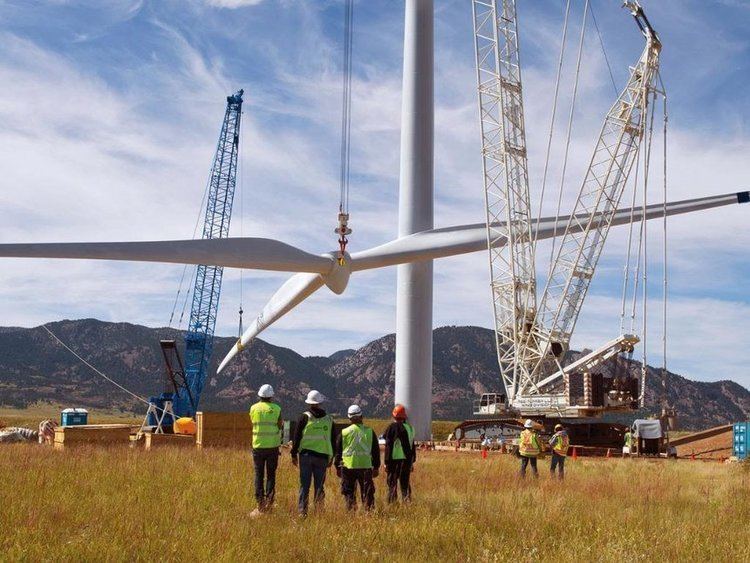 | ||
Nameplate capacity 310.25 megawatts (416,050 hp) | ||
The Lake Turkana Wind Power Project (LTWP) is the single largest private investment in Kenya’s history. The wind farm covers 40,000 acres (162 km ²) and is located in Loiyangalani District, Marsabit County. The Ksh70 billion wind farm aims to provide 310MW of reliable, low cost wind power to Kenya’s national grid, equivalent to approximately 17 per cent of the country’s current installed electricity generating capacity. On completion, the project will comprise 365 wind turbines, each with a capacity of 850 kW; the associated overhead electric grid collection system and a high voltage substation that will be connected to the national grid. The power produced will be bought at a fixed price by Kenya Power (KPLC) over a 20-year period in accordance with the (Power Purchase Agreement) (PPA) with the latter. The project proponent is the LTWP consortium comprising KP&P Africa B.V. and Aldwych International as co-developers, Industrial Fund for Developing Countries (IFU), Vestas East Africa Limited (Vestas), Finnish Fund for Industrial Cooperation Ltd (Finnfund), KLP Norfund Investment AS (KLP Norfund) and Sandpiper.
Contents
- Location
- Specification
- History
- Developers and funding
- Transmission line and substation
- World Bank pulls out of project
- Economic impacts
- Impacts on Kenyan State and consumers
- Grid stability
- Meru High Court lawsuit
- Indigenous rights issues
- Social and Environmental Impacts
- Conflict
- Sarima Indigenous Peoples Land Forum
- References
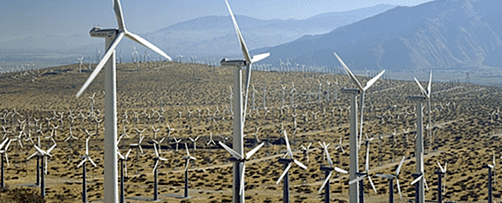
The date of completion has been delayed due to community, lender, social & environmental issues. These include: the opposition of local tribal inhabitants in the Sarima region; the filing of a lawsuit at Meru High Court regarding land titles in 2014; and the World Bank withdrawing its support in October 2012.
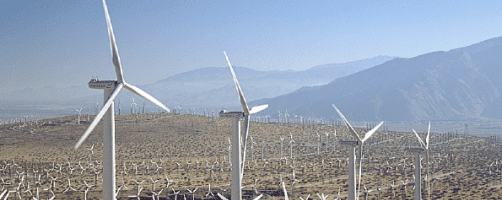
Location
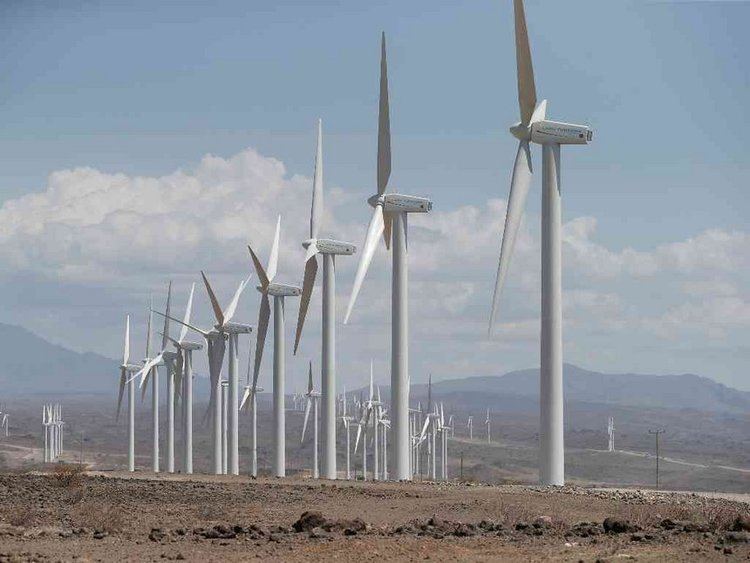
The wind farm will be located approximately 50 kilometres (31 mi), north of the town of South Horr, in Loyangalani sub-county, in the extreme western part of Marsabit County, in the former Eastern Province. This location lies approximately 230 kilometres (140 mi), by road, northwest of Marsabit, where the county headquarters are located. The approximate coordinates of the wind farm will be:2°43'33.0"N, 36°48'06.0"E (Latitude:2.725833; Longitude:36.801667). The project is planned on indigenous pastoralist land. The tribes that communally own land in this area include El Molo, Rendille, Samburu, Turkana and other indigenous and pastoralist communities in the South-East of Marsabit County.
Specification
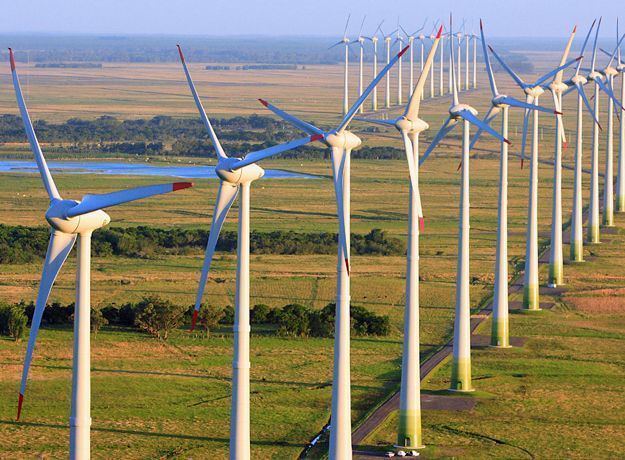
The wind farm site, covers approximately 40,000 acres (160 km2). The farm will have 365 turbines each with capacity of 850 kW. The power generated from the wind turbines will be transmitted via overhead electric cables to a substation which will be located on the premises. From the substation, power will be evacuated via 400kV high voltage electric cables to a substation in Suswa, approximately 600 kilometres (370 mi), south of Loyangalani, where it will be integrated into the national power grid. The electricity will be bought by Kenya Power Company at a fixed price for 20 years from the time of commissioning. As part of the development, the road from Laisamis to the project site, a distance of approximately 240 kilometres (150 mi), is slated to be upgraded. Construction began in 2015 and full operation to commence in 2018. As of April 2015, construction has begun. The first 90 MW is expected online in October 2016 with full commissioning of the full 300MW is planned for July 2017.
History
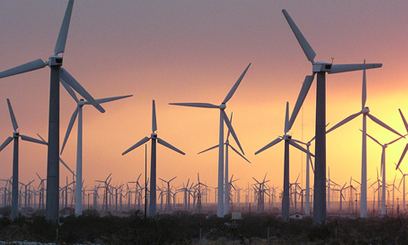
LTWP was created in 2006 out of the partnering of Anset Africa Limited (a company involved in project development and management in the areas of tourism, biogas energy, telecommunications, solid waste management, and road construction) and KP&P (a company that develops and operates wind energy projects). In 2005, discussions with the Kenyan government began regarding the development of a wind power project near to Lake Turkana and as a result, extensive wind assessments were conducted. Later in 2007 environmental fieldwork was undertaken. A Memorandum of Understanding (MOU) was signed between LTWP and Kenya Power on 10 April 2008. Land permits IR Number 6395/1 (L.R. 28031) and IR Number 6396/1 (L.R. 28031/2) were signed with the Kenyan government in March 2009 which caused problems when local communities only came to know the plans in April 2014. Construction began in 2015 and is expected to be complete in 2018. In March 2016, the first shipment of 30 wind turbines arrived in the country, in anticipation of the first 50MW coming online in September 2016.
Developers and funding
The company that owns and is developing the wind farm is called Lake Turkana Wind Power Limited. The consortium which owns LTWP Limited includes the following entities:
The lead arranger for the US$853.12 million syndicated financing package is the African Development Bank, with Standard Bank and Nedbank Capital of South Africa as co-arrangers. The following have provided financing to the project.
The following entities made outright donations to the project:
Transmission line and substation
In 2010, the Spanish government offered to finance the construction of a 427 km double circuit transmission line southwards from the site to Suswa, approximately 100 km west of Nairobi. The $150 million offer comprises:
This means that the Kenya Electricity Transmission Company (KETRACO), a Government-owned entity created in 2008, will also partly fund the transmission line and the substation by means of a tolling arrangement with Kenya Power. Spanish company Isolux Corsán won a $208.1 million tender for this construction.
World Bank pulls out of project
LTWP suffered a setback in 2012 when the World Bank withdrew its support for the project. Bank officials allegedly had concerns that the electricity produced would outweigh demand. The World Bank Group’s country director in Kenya, Mr. Johannes Zutt, stated that Kenya could be left with excess power on the grid worth up to Sh8.5 billion (equivalent to $100 million) per year. Originally, the project was expected to be fully operational by the end of 2014. From the project perspective, the withdrawal of the World Bank could be seen in a positive light as it allowed LTWP to move forward to financial close. A source at power transmission firm Ketraco indicated that the agency was happy with the World Bank’s decision to quit. "We are happy that the World Bank has withdrawn. They were putting a lot of hurdles in our way but now we can go ahead." Another commentator noted that "This is the third project in Kenya the World Bank has sabotaged in the last six years citing feeble excuses" and "[a]ll is not lost however... as 'the African [Development] Bank is now looking at ways of getting other guarantors to ensure the project does not delay further,' local media reported."
Economic impacts
LTWP will be the largest single private investment in Kenya at the time it is made. LTWP claims the wind farm will reduce and possibly eliminate Kenya's dependency on diesel and heavy fuel power stations, however, this claim is unsubstantiated. Fuel imports to fire up these thermal power stations, costs the Kenyan taxpayer US$150 million (KES:17 billion) annually. It is anticipated that the project will contribute KES:3 billion (US$35 million) annually, and KES:58.6 billion (US$673 million), in tax revenue over a period 20 years. During construction, approximately 2,500 workers will be hired. Once commissioned, the power station will employ 200 full-time staff.
Despite these apparent benefits the LTWP appears to offer Kenya, evidence highlighted below suggests that overall the project could be negative for the Kenyan Government, citizens, KETRACO and Kenya Power.
Impacts on Kenyan State and consumers
The Project is of significant strategic benefit to Kenya, and at Ksh70 billion (€625 million) will be the largest single private investment in Kenya’s history. With a power tariff of Euro 7.52cents per kWh, LTWP is one of the lowest power tariffs in Kenya along with geothermal power. It is estimated that Kenya will save up to $120 million a year in fuel cost displacement cost by reducing reliance on diesel power plants. LTWP’s contract (Power Purchase Agreement) with government-owned Kenya Power obliges the utility to buy all electricity produced by the wind farm, even if it is not needed, or if more economic electricity sources are available; "The power produced will be bought at a fixed price by Kenya Power (KPLC) over a 20-year period in accordance with the signed Power Purchase Agreement (PPA)."
Furthermore, the Kenyan Government has signed guarantees with LTWP to cover costs in case Kenya Power cannot afford to pay for excess electricity for the duration of the PPA. In order to mitigate this risk the African Development Fund has provided a 'partial risk guarantee' up to the value of €20 million. The Kenyan Government is also liable for losses incurred by delay due to political causes or project failure. These costs, as well as the expenses for the transmission line, are therefore likely be passed on to Kenyan taxpayers and electricity consumers on top of the electricity produced and result in higher prices for electricity users than current rates.
Grid stability
The LTWP project is of such a large scale that it will provide up to 20% of the Kenyan power grid’s capacity to absorb wind energy. It is generally accepted in wind technology research that intermittent resources can destabilise a small grid such as that in Kenya, especially if it is concentrated all in one location. Denmark has over 19% wind power (wind capacity of 4,885MW) connected to the grid, but this capacity is supplied across thousands of projects. While LTWP aims to provide 310MW of reliable, low cost wind power to the Kenya national grid, equivalent to approximately 18% of Kenya’ current installed electricity generating capacity, Currently,Kenya has a total installed capacity of 2,300 MW, largely being generated by hydro (46.3%) and thermal (37.4%). The Government targets to increase generating capacity to 6,762MW in 2017. Kenya also plans to change the energy generation mix, with a view of reducing dependency on hydro and thermal. LTWP will play a key role in balancing the energy generation mix.
Meru High Court lawsuit
Local Turkana communities filed a lawsuit against LTWP in October 2014 at Meru High Court, Kenya to nullify the titles obtained by the company and return the land to its original status as community land. Sagana, Biriq & Co. represent the communities in the ongoing court case. In November 2016 Justice Peter Njoroge of the Meru High Court rejected the application filed by Marsabit residents, requesting the court to stop the Wind Power project
Indigenous rights issues
LTWP project does not comply with national, international and regional laws that protect indigenous rights (see UN Declaration on the Rights of Indigenous Peoples and Article 2 of the Kenyan Constitution). The project will occupy 162 km2 of communally owned land that belongs to indigenous pastoralist tribes held in trust by the local authority for the use of the inhabitants. The private individual land titles obtained by LTWP are considered illegal by the Sarima Indigenous Peoples' Land Forum. Furthermore, LTWP use terra nullius rationale to deny that communities have legal right or claim to the land and are therefore not eligible for land compensation:
"The Sirima [sic] village is located within the proposed LTWP wind farm site previously designated Trust Land and now leased to LTWP, under a 33 year term, renewable up to 99 years. Under the previous designation 'Trust Land' it was managed under the District administration for an on behalf of the community. Consequently, the PAPs [Project Affected Persons] nomadic pastoralist have customary rights of use to land pastures, however have no recognisable legal right or claim to the land other than use and are therefore not eligible for land compensation."Additionally, the UN Indigenous Right to Free, Prior and Informed Consent has been violated by LTWP as communities in the affected region only came to know of the project plans in April 2014; permits to survey areas were signed in 2005 and the Letter of Allotment that privatised the land in the name of LTWP was signed in March 2009. Only in 2009 did LTWP begin to conduct community engagement and consultation after various permits and agreements had already been signed.
Social and Environmental Impacts
Negative social and environmental impacts have also been highlighted in LTWP’s own Environmental and Social Impact Assessment (ESIA) which would have serious implications for the social, cultural, economic and political well-being of the communities affected.
LTWP documents detail plans for the construction of a new "camp" for 2,500 construction site workers. LTWP states that these workers will be employed local workers, trained for the job. However, this part of Northern Kenya lacks enough people to provide the labour so LTWP will need to employ most of these workers from outside the local area.
According to the ESIA, there are a number of potential negative local impacts due to the arrival of the 2,500 workers, and the construction work in general. These include: cultural contamination; increased risk of HIV/AIDS, malaria and bilzharia; increased insecurity and community conflicts; challenges of labour force management; increased accidents and occupational hazards; increase in antisocial behavior such as theft, alcohol consumption, production of illegal brews, and the introduction of commercial sex; long-term erosion of normal community life; increased demand for wood resources in an area with an already "acute shortage"; sanitation and waste disposal problems; decreased livestock grazing area.
Conflict
The Sarima Indigenous Peoples' Land Forum (SIPLF) accuses LTWP of deploying "... aggressive divide-and-rule tactics", using "community members of one tribe to oppose other community members who were demanding more information, more transparency, and a truly participatory and community-based process." "To prevent or undermine uncomfortable questions, consortium representatives promised contracts and jobs to some local elites. When activists unveiled the theft of community land and filed the lawsuit [at Meru High Court], LTWP responded again..." For example, "[o]f the 29 workers watching the two wind towers, 26 are Samburu, whereas only three are Turkana."
Sarima Indigenous Peoples' Land Forum
In February 2015, the inter-tribal Sarima Indigenous Peoples’ Land Forum (SIPLF) was created as an attempt to bring indigenous communities together in order to stop the wind power project. The Forum is named after the village of Sarima that is to be displaced by the project. In their Declaration of 7th February 2015 the SIPLF states:
“The El Molo, Rendille, Samburu, Turkana and other indigenous and pastoralist communities of Laisamis Constituency and Karare Ward, in Marsabit County, Northern Kenya, reject the illegal privatization of 150,000 acres of our ancestral land by the European consortium ‘Lake Turkana Wind Power Ltd.’ (LTWP).” [emphasis added]The SIPLF are not against wind farm development, if there are benefits seen:
"We are not against establishing a wind power project. We know the power of the wind in our ancestral lands, and we want it to contribute to the sustainable development of our communities, the Marsabit County and Kenya as a whole. We are determined to make this happen on the basis of our communities’ ownership and leadership. We won’t allow the theft of our land under any circumstance." [emphasis added]Contrary to documents produced by LTWP about the cultural sensitivity of the project, SIPLF claims that "LTWP representatives have expressed, in actions and words, their complete contempt for our region and for our communities’ rich environment and cultures. Carlo Van Wageningen, one of the founders of LTWP, expressed this poor perception in eloquent terms:
"If you were to see some of the images of our wind site, of our site, I would say it reminds me of the pictures I used to see of the moon. Every hill is a crater, it’s old lava flows and lava rock everywhere, and it is very windy. There is absolutely nothing there, there is no infrastructure, there are no electrical connections, there are no roads, there is no way to host anyone unless you put them in a tent, so we have to build everything.""Further evidence of this attitude is provided by a Mr. Parker in a May 2015 Wall Street Journal article; "You are at a huge distance from civilization…" he says.
